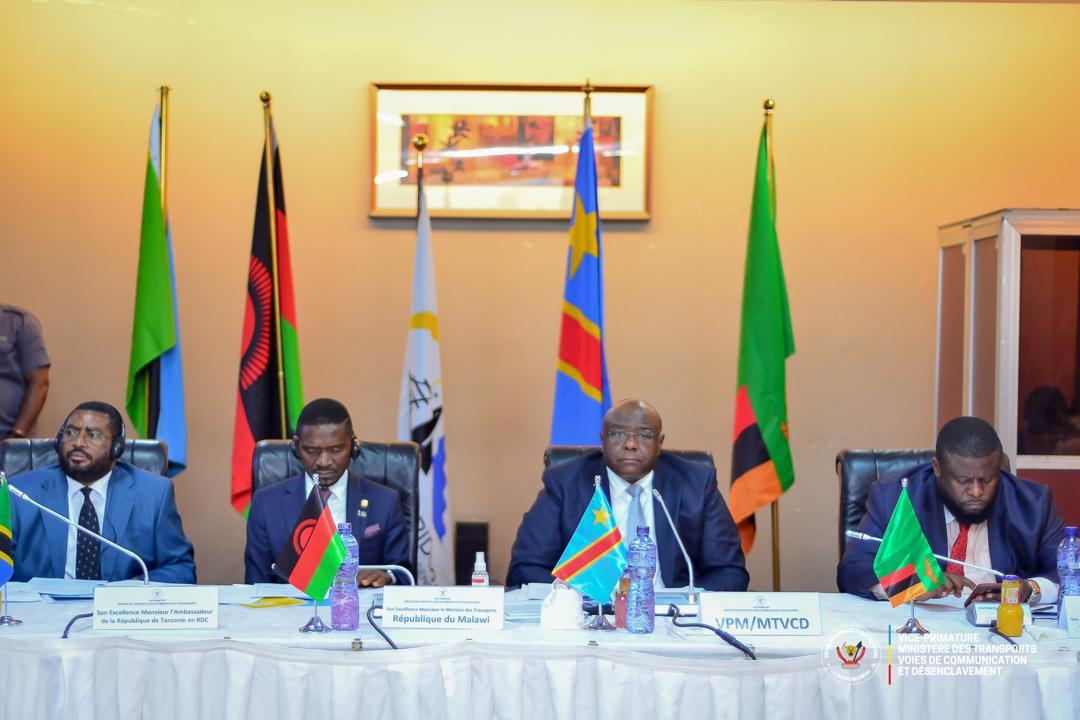
Zambia joins the Central Corridor, which stretches south
By formally joining Tanzania, Zambia has expanded the Central Corridor’s southern reach beyond the East African Community (EAC) group, connecting landlocked nations to the Indian Ocean.
On October 8, at a Council of Ministers meeting of the Central Corridor Transit Transport Facilitation Agency (CCTTFA) member countries in Kinshasa, Democratic Republic of Congo, Zambia’s Minister of Transport and Logistics, Frank Museba Tayali, signed a formal agreement confirming full membership.
DR Congo, Burundi, Rwanda, Uganda, Tanzania, which is home to the corridor’s single sea outlet at the port of Dar es Salaam, and Malawi, the only non-EAC member, are the members of the CCTTFA.
The transport ministers of the host nations—DR Congo, Zambia, and Malawi—participated in the Kinshasa meeting in person, while the other four nations participated electronically.
By streamlining customs processes, cutting transit times, and lowering transportation costs, the most recent improvement will further CCTTFA’s objective to boost economic activity along the corridor.
According to a statement from the agency, “the Central Corridor’s position as a preferred trade route for regional and international commerce is expected to be further strengthened by the inclusion of Zambia.”
It further stated that the agreement would enable Lusaka to formally integrate its transportation system with the corridor, opening the door for improved regional commerce and economic growth.
Through the Tazara railway, which runs from Dar es Salaam to Kapiri Mposhi, and the Copperbelt line, which connects to the DR Congo, Zambia is already well connected to Tanzania.
The country’s choice to join CCTTFA as a full member may also have broader effects on the outcome of the planned Lobido Corridor railway project, which would run from Angola to Tanzania in the southern portion of the continent.
Preliminary designs for the Lobido Corridor train route, which connects the Atlantic and Indian oceans, show that it will also run via Zambia and the Democratic Republic of the Congo. The United States has already committed to providing initial construction funds for this project.
The possibility that the corridor would eventually connect to the Chinese-built Tazara raises concerns about potential future US-China cooperation on the project as a whole.
Considered essential to fostering economic development in eastern Africa are the Central Corridor and its counterpart, the Northern Corridor, which connects the Kenyan port of Mombasa with Uganda, Rwanda, Burundi, South Sudan, and the Democratic Republic of the Congo.
In order to facilitate coordinated efforts by its member states to facilitate and expedite transit trade between them, the CCTTFA was founded in 2006 as an integrated multimodal transport and logistics network.
In an effort to improve connection between the two nations, DR Congo and Malawi inked a bilateral air services agreement (Basa) during last week’s CCTTFA high-level conference in Kinshasa.
In order to increase the efficiency of data collection by cutting expenses and simplifying transit traffic monitoring, the agency has started a new systems integration for data exchange with the General Directorate of Customs and Excise (DGDA) of the Democratic Republic of the Congo.
It said that the connection will boost the effectiveness of its transport observatory, which tracks important performance metrics like freight volumes, transit times, productivity, and efficiency.
The CCTTFA stated that “the integration is expected to improve trade operations across the region by facilitating the seamless flow of cargo through transit countries.”
All Categories
Recent Posts
Tags
+13162306000
zoneyetu@yahoo.com



